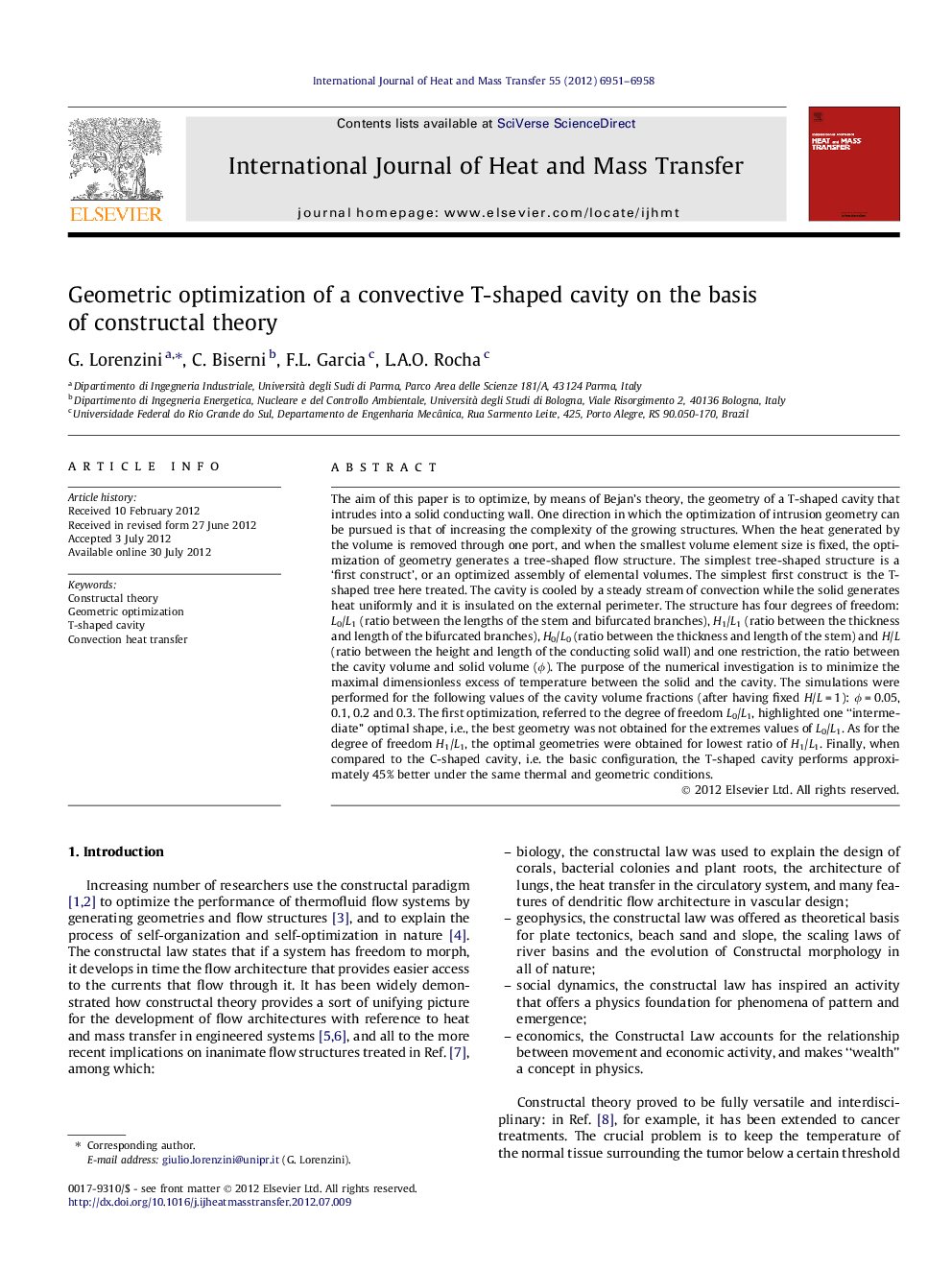| کد مقاله | کد نشریه | سال انتشار | مقاله انگلیسی | نسخه تمام متن |
|---|---|---|---|---|
| 658725 | 1458089 | 2012 | 8 صفحه PDF | دانلود رایگان |
عنوان انگلیسی مقاله ISI
Geometric optimization of a convective T-shaped cavity on the basis of constructal theory
دانلود مقاله + سفارش ترجمه
دانلود مقاله ISI انگلیسی
رایگان برای ایرانیان
کلمات کلیدی
موضوعات مرتبط
مهندسی و علوم پایه
مهندسی شیمی
جریان سیال و فرایندهای انتقال
پیش نمایش صفحه اول مقاله

چکیده انگلیسی
The aim of this paper is to optimize, by means of Bejan's theory, the geometry of a T-shaped cavity that intrudes into a solid conducting wall. One direction in which the optimization of intrusion geometry can be pursued is that of increasing the complexity of the growing structures. When the heat generated by the volume is removed through one port, and when the smallest volume element size is fixed, the optimization of geometry generates a tree-shaped flow structure. The simplest tree-shaped structure is a 'first construct', or an optimized assembly of elemental volumes. The simplest first construct is the T-shaped tree here treated. The cavity is cooled by a steady stream of convection while the solid generates heat uniformly and it is insulated on the external perimeter. The structure has four degrees of freedom: L0/L1 (ratio between the lengths of the stem and bifurcated branches), H1/L1 (ratio between the thickness and length of the bifurcated branches), H0/L0 (ratio between the thickness and length of the stem) and H/L (ratio between the height and length of the conducting solid wall) and one restriction, the ratio between the cavity volume and solid volume (Ï). The purpose of the numerical investigation is to minimize the maximal dimensionless excess of temperature between the solid and the cavity. The simulations were performed for the following values of the cavity volume fractions (after having fixed H/LÂ =Â 1): ÏÂ =Â 0.05, 0.1, 0.2 and 0.3. The first optimization, referred to the degree of freedom L0/L1, highlighted one “intermediate” optimal shape, i.e., the best geometry was not obtained for the extremes values of L0/L1. As for the degree of freedom H1/L1, the optimal geometries were obtained for lowest ratio of H1/L1. Finally, when compared to the C-shaped cavity, i.e. the basic configuration, the T-shaped cavity performs approximately 45% better under the same thermal and geometric conditions.
ناشر
Database: Elsevier - ScienceDirect (ساینس دایرکت)
Journal: International Journal of Heat and Mass Transfer - Volume 55, Issues 23â24, November 2012, Pages 6951-6958
Journal: International Journal of Heat and Mass Transfer - Volume 55, Issues 23â24, November 2012, Pages 6951-6958
نویسندگان
G. Lorenzini, C. Biserni, F.L. Garcia, L.A.O. Rocha,